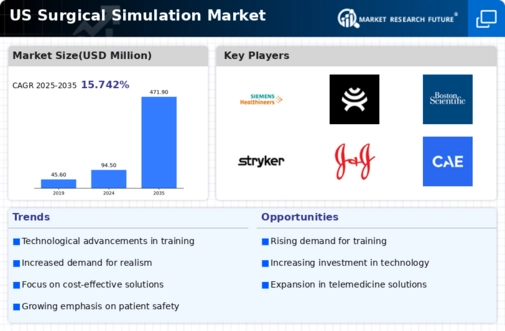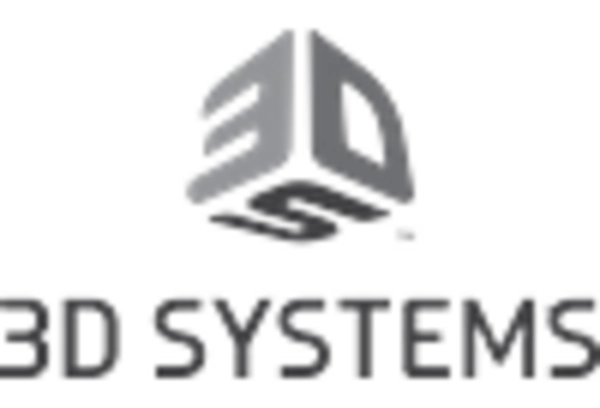Growing Investment in Medical Education
Investment in medical education is a critical driver of the surgical simulation market. As the healthcare landscape evolves, there is a pressing need for continuous education and training for medical professionals. Educational institutions and healthcare organizations are increasingly allocating resources towards simulation-based training programs. This trend is reflected in the estimated $3 billion investment in medical simulation technologies projected for the next five years. Such investments are aimed at enhancing the skills of healthcare providers, ensuring they are well-prepared for the complexities of modern surgical procedures. Consequently, the surgical simulation market stands to benefit from this influx of funding, which supports the development of innovative training solutions.
Technological Advancements in Simulation Tools
Technological advancements are significantly influencing the surgical simulation market. Innovations such as virtual reality (VR), augmented reality (AR), and haptic feedback systems are transforming the way surgical training is conducted. These technologies offer immersive experiences that enhance learning and retention for medical professionals. For instance, the integration of VR in surgical training has been shown to improve procedural skills by up to 30%. As hospitals and educational institutions increasingly invest in these advanced tools, the surgical simulation market is likely to expand. The potential for improved surgical outcomes and reduced error rates further underscores the importance of these technologies in training future surgeons.
Rising Demand for Minimally Invasive Procedures
The surgical simulation market is experiencing a notable increase in demand for minimally invasive procedures. This trend is driven by the growing preference among patients for surgeries that promise reduced recovery times and lower risk of complications. As healthcare providers seek to enhance their surgical capabilities, the adoption of simulation technologies becomes essential. According to recent data, the market for minimally invasive surgical instruments is projected to reach approximately $50 billion by 2026, indicating a robust growth trajectory. This shift necessitates advanced training solutions, as surgeons require proficiency in new techniques. Consequently, the surgical simulation market is positioned to benefit from this demand, as it provides realistic training environments that facilitate skill acquisition and improve patient outcomes.
Regulatory Support for Simulation-Based Training
Regulatory support for simulation-based training is emerging as a significant driver in the surgical simulation market. Government agencies and professional organizations are recognizing the value of simulation in improving surgical education and patient safety. Initiatives aimed at integrating simulation into surgical training curricula are gaining traction, with policies encouraging the adoption of these methods. This regulatory backing is likely to enhance the credibility and acceptance of simulation-based training among healthcare providers. As a result, the surgical simulation market may experience accelerated growth, as institutions seek to comply with evolving standards and improve the quality of surgical education.
Increased Focus on Patient Safety and Quality of Care
The surgical simulation market is being propelled by an increased focus on patient safety. Regulatory bodies and healthcare organizations are emphasizing the need for rigorous training protocols to minimize surgical errors. This heightened awareness has led to the implementation of simulation-based training programs, which are recognized for their effectiveness in enhancing surgical skills. Data suggests that simulation training can reduce the incidence of surgical complications by as much as 20%. As healthcare providers strive to meet these safety standards, the surgical simulation market is likely to see sustained growth, driven by the demand for effective training solutions that prioritize patient outcomes.

















Leave a Comment